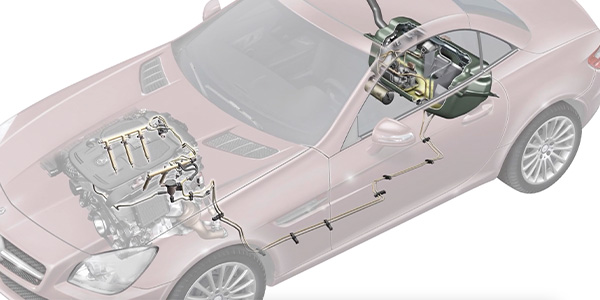Emissions is an often-misunderstood topic. Many people think it’s only what comes out of the exhaust or can be measured at a testing station that counts. In truth, it is really about managing everything that enters the environment from the vehicle.
Regardless of what the problem is, Standard has you covered, with a complete Emission Control Program that includes more than 4,000 parts for crankcase and exhaust gas recirculation and over 1,500 EVAP components.
The check engine light is often the first indication that there is something wrong with a vehicle’s evaporative emissions control system.
Modern EVAP systems are selective with how they vent vapors back into the engine. The PCM will select the right engine temperature and throttle position to purge the system. They are also very selective when system checks are performed. A computer is constantly monitoring the results of the commands sent to the valves with the help of sensors mounted in the tank and EVAP canister.
There are many different components that make up the EVAP system – they can read like alphabet soup sometimes, so it’s important that you know how to diagnose them. Equally important, you need to understand how to properly replace them when they fail.
Standard’s complete EVAP program includes products that match OE-designed performance to keep vehicles running clean. Let’s clear the air about some of them.
Close-up: Canister Purge Solenoid
Canister Purge Solenoids, sometimes also called Canister Purge Valves, often fail and become stuck open or closed. When this happens the EVAP system is not able to properly purge itself – this can even affect fuel mileage.
Close-up: Fuel Vapor Canister
Fuel vapor canisters act as both a filter and a storage container for evaporative emissions. Over time, they lose their ability to filter our harmful emissions. Many techs opt to install new canisters when they are replacing failed hoses, canister purge solenoids or ESIMs.
Close-up: ESIM
The Evaporative System Integrity Module, also known as an Evaporative System Integrity Monitor or ESIM, is a key component of the EVAP System on many late model Chrysler, Dodge, Jeep, RAM Trucks and Fiat vehicles.
In addition, Standard Motor Products offers the other EVAP components you’re likely to encounter as well, including Canister Purge Valves, Canister Vent Valves, Canister Vent Solenoids and Leak Detection pumps and hoses.
Some of Standard’s other emission control components include exhaust gas recirculation products such as EGR Valves, Control Solenoids, Position Sensors, Pressure Sensors and EGR Tubes. The comprehensive crankcase emissions program includes crankcase breather hoses, crankcase filters, PCV valves and ventilation filters.
All Standard emissions control products are engineered to match OE performance to keep today’s complex emissions systems operating as designed. Standard even tests their emission components in the lab, and on vehicles at their vehicle testing center in Texas to make sure they integrate correctly with the emissions systems.
The end product for your customer is a replacement part that has been designed, developed, tooled, manufactured and tested to perform properly and withstand real world conditions every time.
By better maintaining the cars on the road today, we’ll ensure a cleaner planet and a healthier aftermarket for years to come.
For more information, visit StandardBrands.com.
This video is sponsored by Standard.














